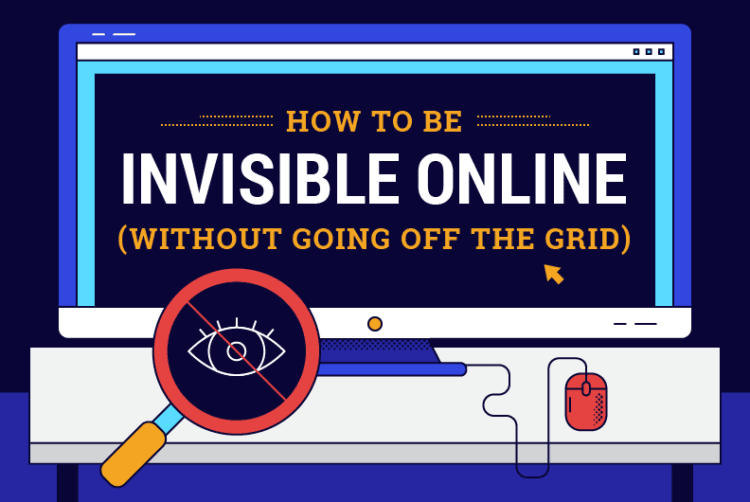Do you know what your data is up to behind your back?
Most of us treat our smart phones like portable offices these days. And when you’re in business, what’s said and done in your office is supposed to stay between those four walls. Unfortunately, your search engine and social media activity is far from private, and even if the data-collectors claim to keep a tight lid on what they harvest from you, it’s disturbing to know that somebody is watching what you’re doing
What’s more, data leaks and security breaches seem to hit the headlines every day. It’s all well and good getting personalized ads, but what about the darker side of data? The short answer is: if you want to stay protected, you need to minimize your digital trail.
Q2 hedge fund letters, conference, scoops etc
Is it really possible to stay anonymous online these days? Of course, you’ll always need a certain level of identification just to get things done. But it makes sense to stay invisible whenever it’s feasible.
This new visual guide from CashNetUSA demonstrates exactly how to do that on each of your browsers and websites of choice. Let’s look a bit closer.
Browser privacy
Folk that require super-serious browser security – for example, the military and organizations that are particularly expectant of espionage – often turn to Tor to keep their browsing sessions anonymous. In fact, ‘The Onion Router’ was initially developed by the US Navy for just this purpose. Today, Tor is a non-profit group that works on the research and development of online privacy measures.
Tor works by switching your activity between the various servers that it controls. Everything you do is encrypted, so that if someone tried to trace your data it would appear to come from random nodes across the network.
But Tor is arguably a bit of a heavy-handed solution for most individuals and businesses. For regular users, adjusting your browser settings should help you move towards the level of privacy you need.
The simplest method is to go ‘incognito,’ as the Google Chrome browser calls it (Firefox calls it ‘Private Window’ and Explorer calls it ‘InPrivate Browsing.’) These functions can be accessed from the respective browsers’ settings menus, and will disable tracking information such as cookies and browser history. In this way, you can prevent websites from tracking what you do (unless you log in to them) and your ‘history’ will be automatically deleted when you close that browser window. Do note that your employer or internet provider may still be able to access your click trail, even when you’re incognito.
There are more tailored versions of this that you can try. For example, in regular browsing mode it’s possible to disable cookies (the digital ‘crumbs’ you leave that enable websites to personalize your experience), again by clicking through to your browser’s settings (see infographic for specific instructions for each browser).
Or you can tailor your cookie preferences for each individual website as you land on it. This means that you can keep full functionality on the websites for which you need it, but stay private on risky sites without having to keep switching to incognito.
Social media privacy
We’re all online celebrities these days. From your LinkedIn profile to your Facebook page, there’s always a chance somebody important to your business is going to look in on what you’re doing. That’s great when it results in more business, but can be troubling on platforms like Facebook where you want to share personal stories just with the people you know and love.
If you’re a true ‘celebrity’ – that is to say, if you’re in a position where you know that strangers are interested in what you tell the world on social media – it is worth enabling the ‘Follower’ option, which enables people to follow your public posts in their timeline without having to become ‘friends.’ You can set the preferences in your Settings section, but after that it’s always worth double-checking your intended audience each time you make a post.
You should also go to https://www.facebook.com/ads/preferences and disable ‘Ads that include your social actions’ if you don’t want Facebook to integrate your behavior into their client’s campaigns.
Twitter is another place to be cautious. Tweet over-casually and you don’t know what information you might be sharing! Location data is a particularly pernicious bit of meta-data. Twitter can figure out where you are tweeting from and attach this information to your tweet.
It can be useful if you’re trying to publicize your attendance at a symposium or trade fair, or to make a local impact, but there are other situations where it’s best to just keep to what you want to say – for example, if you’ve wagged work to go for an interview with your boss’s rival, or you don’t want to tip off your competitors to the region that you are researching. To prevent this, navigate to your Privacy and Safety settings and make sure ‘Tweet with a location’ is unchecked. You can click the button beneath this to clear previous location data, too. And if you do happen to send a tweet that will benefit from a location tag, you can always add it on a tweet-by-tweet basis.
Online security like this is a kind of on-going digital hygiene. Regulations and individual websites change the way data is handled all the time, and it isn’t always clear to users that it has happened. Get your privacy settings in check today, and you’re in a good position to maintain them over the coming months – so that nobody knows your business who doesn’t need to.







